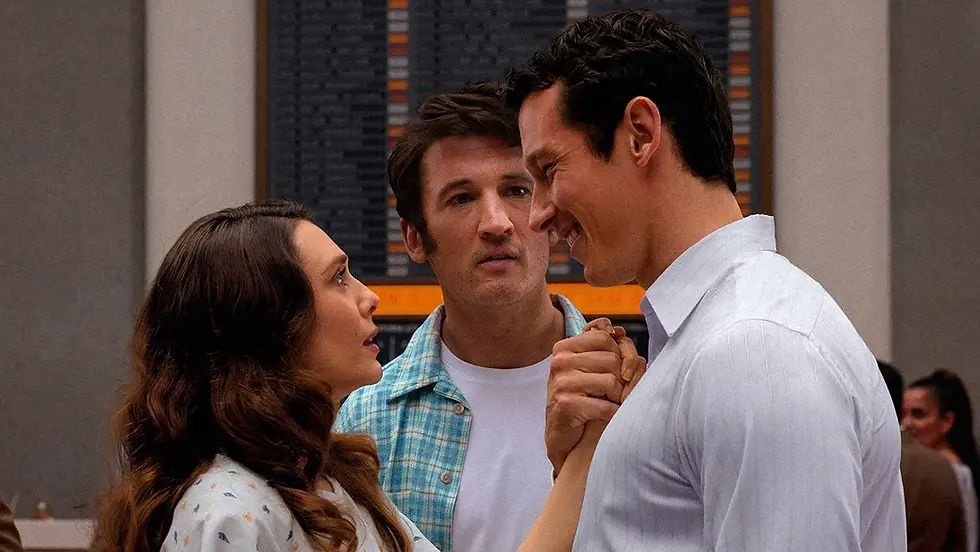Review: Science-fiction thriller 'Archive' could use a reboot
- Nate Adams

- Jul 11, 2020
- 2 min read
Updated: Jul 12, 2020

Courtesy of VERTICAL ENTERTAINMENT
Grab some “Ex Machina,” add a dash of “Blade Runner,” throw in a sprinkle of “Black Mirror,” and you’ll end up with something like “Archive,” a troubled Theo James (“Divergent”) science fiction thriller that looks and sounds great but is made up of combustible parts from all the aforementioned titles above.
Granted, those films didn’t take place in the glossy, snow-covered forests of Japan, which is the only reason to see this movie, because it's beautifully shot by Laurie Rose (“Free Fire”) and has Oscar winning composer Steven Price (“Gravity”) dropping some slick beats. Other than those inspired choices, “Archive” is a basic upload, save for a last second twist that genuinely provoked me.
George (James) works for a technology company out in the vast Japanese wilderness, on a mission to restart one of the conglomerate's decommissioned bases. The place is a literal fortress, complete with solid concrete walls, and tall barriers that would scare away any sign of civilization. To keep him company, George has constructed two bulky robots from scratch and checks in with his dead wife, Julie (Stacy Martin) through the Archive, which is a giant McGuffin that allows the living to talk to the dead for a short period of time.
And time is running thin and soon she will go silent forever, but in George’s spare time, he’s been working diligently on crafting a third robot to house her personality. This doesn’t sit well with the other prototypes, who are jealous of his newfound obsession and his antics spark suspicions from his employers after a data breach suggests George is working on something he shouldn’t be. The results are a third robot that has the look and feel of a real human, complete with true female characteristics.
Directed by long time visual effects and art supervisor Gavin Rothery, “Archive” gets credit for being a nimble little sci-fi thriller but falters when it must present any conflict not buried in tired troupes. George is a mad scientist trying to resurrect the dead through science and technology, using a variety of different simulations to create the perfect A.I. match. Heard that one before?
Still, Rothery is skilled at creating a vacuum of isolation for George and his robots in the snowy mountainside, even if the level of ingenuity and originality on display is scarce. So much so, by the time the second robot tries to sabotage the entire operation, (which is heavily influenced by “2001: A Space Odyssey”) it’s not that surprising.
But the final sequence does suggest Rothery was aiming for something bigger and I had to sit and gather my thoughts upon its conclusion. At least the movie looks great and James – guaranteeing to attract his tween fanbase – plays the lead role with a sense of realism and fragility, all but saving “Archive” from being a complete waste.
Grade: C+
ARCHIVE is now available to rent from various on digital platforms. Check your listings.





Comments